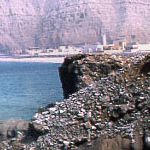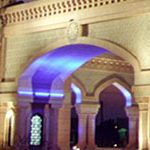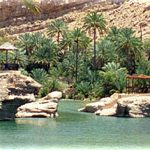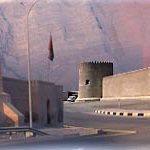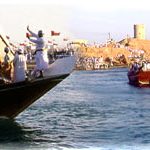The Wetland Reserve in the Governorate of Al Wusta is ranked one of the top 25 sites of international importance for winter migratory birds in the Middle East, and falls in the migration route between Asia and East Africa.
Located in the Wilayat of Mahut, the Wetland Reserve, declared as such by Royal Decree No. 51/2014, is a pristine site spread over an area of 2,621 square kilometres, with complex ecosystems and a unique biodiversity.
It is one of the world’s rare sites for the study of the sustainable use of wetlands in an intertidal zone.
The Ministry of Environment and Climate Affairs is currently coordinating with the relevant authorities to declare the site as the nation’s second wetland reserve, after the Natural Qurm Reserve in the Governorate of Muscat, under the Ramsar Convention on Wetlands. Work is underway to complete the registration for the site.
The Sultanate has officially acceded to this agreement, under Royal Decree No. 64/2012.
The Wetland Reserve in the Wilayat of Mahut is a tourist resort for nature lovers, bird watchers, and wildlife lovers. It has the potential to contribute to the nation’s economy by focusing on the direct and indirect values related to the sustainability of natural resources.
The Bar Al Hakman peninsula forms the largest part of the Wetlands Reserve, consisting of coastal and inland plains of salt, mud flats, and some saltwater lakes of unique natural and geological importance overlooking the west coast of Masirah Island.
It enjoys unique natural components and has a range of islands, estuaries, avicennia trees, sea turtles, and marine mammals, including the rare and endangered Arabian humpback whales, and a range of coral reefs and seagrass. It also has a number of endemic species, such as the Oman clown, carnival corals, hawksbill, loggerhead and green turtles, common and red sandpipers, vultures, cedar birds and the curlew bird.
Since the mid-1980s, Bar Al Hakman has become a centre for the study of water birds in the Sultanate, which is carried out by volunteers and experts from international organisations.
The area has large salt landfills, which are of scientific importance in the migration of birds. It is a major stop in the migration path in the winters for thousands of aquatic birds, such as seagulls, sycamores and pterosaurs.
Recent field surveys carried out by the Ministry of Environment and Climate Affairs, in cooperation with international experts, revealed an increase in the number of migratory birds visiting the reserve annually, with more than half a million birds stopping during the winter period. Eighteen varieties of birds were classified, including the crab plover, haematopoidea, pluvialis apricaria and others.
The Bar Al Hakman area also includes the largest natural cluster of avicennia in the Sultanate, on the Mahut Island in Ghubat Hashish. The total area of these trees is about 162 hectares.
There are also two species of marine grass in the Wetland Reserve in Al Wusta.
They maintain the ecological and chemical balance of the coastal waters and are used by many species of fish and crustaceans for breeding and food.
